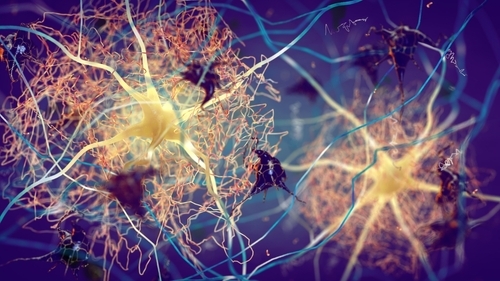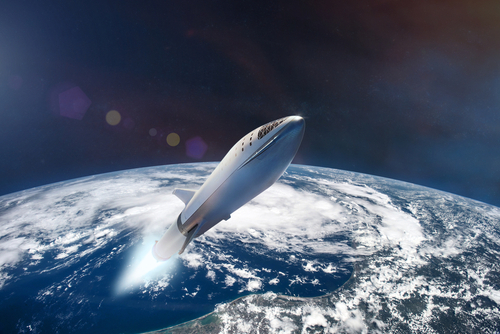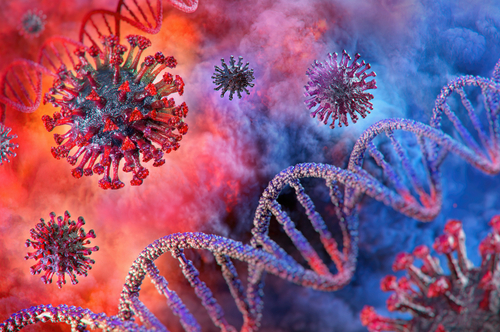R.E. Kearney's Blog, page 4
June 27, 2024
Alzheimer’s Disease and Promising Research
Alzheimer’s disease is a progressive neurodegenerative disorder affecting approximately 55 million people globally and leads to severe cognitive decline and memory loss. The exact cause of Alzheimer’s remains unknown, likely involving multiple factors from genetics to lifestyle.
The key signs of Alzheimer’s are:

Memory Loss – noticeable through repeating statements, misplacing items, getting lost in familiar places, and forgetting family members’ names.
Thinking and Reasoning Difficulties – including multitasking and managing finances.
Judgment and Decision-Making Impairment – making sensible decisions becomes harder.
Language Problems – trouble finding the right words, expressing thoughts, or participating in conversations.
Mood Changes – including emotional instability and personality alterations.
There are things you can do to reduce the risk of developing Alzheimer’s including controlling high blood pressure, managing blood sugar levels (particularly if you’re diabetic), maintaining a healthy weight with a balanced diet and moderating your alcohol, staying physically active, quitting smoking, managing stress, and prioritizing quality sleep.
However, numerous different studies and research together with recent scientific advancements offer hope for people already suffering from Alzheimer’s:
Researchers at the Okinawa Institute of Science and Technology developed a synthetic peptide called PHDP5. These peptides target early-stage Alzheimer’s by ensuring the availability of dynamin for vesicle recycling in neurons. In transgenic mice, PHDP5 significantly restored memory and learning functions.

Scientists have also experimented with gene therapy to reverse Alzheimer’s in mice by boosting the formation of new brain cells in the hippocampus (critical for learning and remembering), they achieved promising results.
Researchers at the Cleveland Clinic Lerner Research Institute discovered that gradually depleting the enzyme BACE1 reverses amyloid plaque formation in mouse brains, improving cognitive function and offering hope for potential treatments.
Bumetanide, a drug used for fluid retention, appeared to reverse signs of Alzheimer’s in mice and human brain cells. Collaborative research by Gladstone Institutes, UCSF, and Icahn School of Medicine demonstrated its efficacy.
In conclusion, while Alzheimer’s disease remains a formidable challenge, these recent breakthroughs provide optimism. Researchers continue to explore innovative approaches, aiming to rescue brain functions before irreversible damage occurs. As we learn more about this complex disorder, we move closer to effective treatments that could transform lives.
June 13, 2024
Refreezing the Arctic: A Bold Endeavor
The Arctic, our planet’s icy crown, is in peril. Rapid warming has led to unprecedented ice melt, threatening ecosystems, weather patterns, and global sea levels. But scientists are not content to watch this unfold passively. Instead, they’re exploring innovative ways to intervene directly and refreeze the Arctic.
The Urgency of Arctic InterventionThe Arctic’s plight extends beyond its icy boundaries. Melting Arctic ice contributes to rising sea levels, releases greenhouse gases from thawing permafrost, and disrupts weather systems worldwide. The economic impact of unmitigated Arctic warming by the end of this century is estimated to be a staggering $67 trillion.
Geoengineering Solutions
Surface Freezing with Water Pumps: Imagine giant pumps lifting seawater to the surface, where it freezes, creating a protective layer over the Arctic snow. This approach aims to restore lost ice cover and slow down warming. Challenges: Energy requirements, logistical complexities, and potential unintended consequences.
Reflective Glass Beads: Scatter reflective glass beads on snow surfaces to deflect harmful solar rays. By increasing albedo (reflectivity), we can help preserve existing ice and prevent further melting. Challenges: Ensuring widespread distribution and long-term effectiveness.
Sulfate Aerosols to Reflect Sunlight: Injecting sulfate aerosols into the stratosphere could mimic the cooling effect of volcanic eruptions, reflecting sunlight away from the Arctic. However, this approach raises ethical and environmental concerns. Challenges: Balancing benefits with risks.
Seafloor Mounds to Protect Glaciers: Constructing underwater mounds near glaciers could prevent warm ocean water from melting them. These mounds act as natural barriers, preserving ice mass. Challenges: Engineering feasibility and long-term stability.
The Road AheadRefreezing the Arctic is no small feat. It requires international collaboration, substantial investment, and careful consideration of ecological impacts. But as the ice continues to vanish, scientists remain committed to these audacious endeavors.
While geoengineering offers potential solutions to combat climate change, it also comes with significant risks. Here are some key concerns:
Unintended Consequences: Geoengineering interventions can have unforeseen effects on ecosystems, weather patterns, and regional climates. Altering one aspect of the environment may lead to unintended outcomes elsewhere. For example, sulfate aerosols injected into the stratosphere to reflect sunlight might disrupt rainfall patterns or harm the ozone layer.

Ethical Dilemmas: Decisions about geoengineering affect the entire planet. Who gets to decide? How do we balance global interests with local impacts? Some argue that geoengineering could be used as a “quick fix” instead of addressing root causes like reducing greenhouse gas emissions.
Dependency and Risk Compensation: Relying on geoengineering might reduce the urgency to mitigate emissions. If people believe we can “fix” the climate, they may delay necessary changes. There’s a risk of moral hazard—assuming that geoengineering will bail us out if things get worse.
Geopolitical Tensions: Implementing large-scale geoengineering projects requires international cooperation. Disagreements over methods, costs, and benefits could strain relations between countries.
Technological Challenges: Developing and deploying geoengineering technologies at a global scale is complex. We lack experience and robust testing. Failure or unintended consequences could exacerbate existing climate problems.
Equity and Justice: Geoengineering impacts won’t be evenly distributed. Some regions may benefit while others suffer negative effects. Ensuring fairness and justice in implementation is crucial.
In summary, while geoengineering holds promise, we must proceed cautiously, considering both its potential benefits and the risks involved. A holistic approach that combines mitigation, adaptation, and responsible geoengineering is essential for a sustainable future.
May 30, 2024
Solar Power in Germany: A Renewable Energy Revolution
Germany has emerged as a global leader in harnessing solar energy, demonstrating its commitment to sustainability and combating climate change. Let’s delve into the fascinating world of solar power in this European nation.
Historical Context
Solar power accounted for an estimated 10.7% of Germany’s electricity in 2022, a remarkable increase from less than 0.1% in 2000. This growth reflects the country’s dedication to renewable energy sources and its transition away from fossil fuels. Germany has consistently been among the world’s top photovoltaic (PV) installers, with a total installed capacity of 81.8 gigawatts (GW) by the end of 2023.
Impressive PV Capacity

Germany boasts an impressive 807 watts of solar PV per capita (as of 2022), ranking third globally behind Australia and the Netherlands. The country’s commitment to solar energy is evident in its long-term targets: aiming for 80% renewable electricity by 2030 and full decarbonization before 2040.
Photovoltaic Industry
The photovoltaic industry plays a pivotal role in shaping Germany’s sustainable energy future. Solar power serves as a crucial renewable energy source for both electricity and heat supply. As part of its “Energy Transition,” Germany offers significant market opportunities in photovoltaics and energy storage.
Challenges and Innovations
While Germany’s solar success story is inspiring, challenges remain. Fluctuating solar and wind energy necessitate grid adaptations, new storage capacity, and the gradual phasing out of fossil and nuclear power plants. Brown coal and nuclear power, being the cheapest suppliers, pose dilemmas as the country strives for a greener future. Nevertheless, Germany’s surplus solar electricity is exported to neighboring countries, contributing to a cleaner energy landscape.

In recent years, the global energy landscape has witnessed a remarkable shift. Solar power, once considered a niche technology, is now on the cusp of surpassing fossil fuels as a dominant energy source. Wind and solar power generation is growing at a rate of 15-20% per year, based on a 10-year average. Continued investments in solar and wind infrastructure will play a crucial role in achieving this tipping point. As fossil fuels become less economically viable and environmentally sustainable, the transition to renewables becomes inevitable.
The International Energy Agency (IEA) anticipates that wind and solar capacity will surpass both gas and coal globally in 2024. This milestone signifies a seismic shift in the energy sector.
Conclusion
Germany’s commitment to solar power exemplifies its dedication to environmental stewardship. As the world transitions toward cleaner energy sources, Germany’s PV capacity and innovative policies serve as a beacon of hope for a sustainable future.
In summary, Germany’s solar journey is a testament to the power of human ingenuity and collective effort in combating climate change. With continued investments and technological advancements, solar energy will play an even more significant role in shaping our planet’s future.
May 16, 2024
Warp Drives: Bridging the Stars with Hypothetical Technology
Faster-than-light travel has long captured the imagination of science fiction enthusiasts and physicists alike. The prospect of journeying between stars in a reasonable timeframe necessitates surpassing the cosmic speed limit imposed by the speed of light. While faster-than-light travel remains theoretical, recent research suggests that warp drives, once confined to science fiction, might not be entirely out of reach.
A warp drive, if realized, would revolutionize our understanding of time and space. Here’s how:

Space Compression:
A warp drive would compress space in front of a spacecraft, allowing it to cover vast interstellar distances more quickly. Our perception of distance and travel time would drastically change. What once took centuries could become feasible within days or weeks.
Time Dilation:
According to Einstein’s theory of relativity, as an object approaches the speed of light, time slows down relative to an observer. A warp drive, by bending spacetime, could lead to time dilation effects. Crew members might experience less time passing during their journey than observers outside the warp bubble.
Temporal Paradoxes:
Faster-than-light travel could introduce temporal paradoxes. For instance, a ship arriving at its destination before it even left could challenge causality. Our understanding of cause and effect would need reevaluation.
Cosmic Neighborhood:
Warp drives would allow us to explore neighboring star systems within a human lifetime. Our perspective of the cosmos would shift from distant points of light to reachable destinations.
Warp drives would redefine our notions of distance, time, and the fabric of spacetime itself, opening up new frontiers for exploration and challenging our fundamental understanding of the universe, but is it a genuine possibility?

The Alcubierre Warp Drive:
In 1994, physicist Miguel Alcubierre proposed a mathematical framework for a warp drive. It involves creating a bubble of compressed spacetime in front of the spacecraft and expanded spacetime behind it.
The challenge lies in the need for negative energy—a hypothetical form of energy that remains unobserved. If harnessed, negative energy could encapsulate the warp bubble.
Recent Advances:
Previous warp drive concepts required exotic matter with negative energy density. However, a new approach avoids this requirement. Physicists Alexey Bobrick and Gianni Martire recently proposed a warp drive design that adheres to known physics. Their model doesn’t violate energy conservation laws and doesn’t rely on exotic matter. While challenges remain, these recent developments suggest that warp drives may be theoretically possible.
Physicist Jared Fuchs, along with a team of researchers, has proposed another novel solution for a constant-velocity subluminal warp drive that adheres to the principles of general relativity. The solution combines a stable matter shell with a shift vector distribution similar to the Alcubierre metric, but unlike previous models, it doesn’t require exotic matter or violate energy conservation laws. While theoretically feasible, the mass required for this warp drive exceeds current technological capabilities, in fact it would require a mass greater than that of the Sun.
In conclusion, warp drives remain tantalizingly distant but not entirely implausible. As we continue to explore the cosmos, humanity’s dream of bridging the vast interstellar distances may one day become a reality
April 25, 2024
Universal Vaccines
In the quest to combat infectious diseases, scientists have been exploring innovative approaches to vaccine development. One promising avenue is the concept of universal vaccines, which aim to provide broad protection against various strains of pathogens, including those that may emerge in the future.
What Are Universal Vaccines?
Unlike traditional vaccines, which target specific strains of a pathogen, universal vaccines are designed to teach the immune system to defend against all versions of that pathogen—even those that haven’t yet appeared. These vaccines focus on a fundamental element shared by different strains, allowing them to provide broader and longer-lasting immunity.

The Role of mRNA Vaccines
One groundbreaking technology that has gained prominence during the COVID-19 pandemic is mRNA (messenger ribonucleic acid) vaccines. Both the Pfizer/BioNTech and Moderna COVID-19 vaccines utilize this approach. But what exactly are mRNA vaccines, and how do they work?
mRNA is a component found in all living organisms. Its primary role is to carry instructions from our genes (encoded in DNA) to the protein-making machinery within our cells.In the context of vaccines, synthetic mRNA is used to deliver instructions for creating a harmless piece of protein identical to one found in a specific virus or bacterium.Our cells then produce this protein, triggering an immune response.Once the protein is assembled, our immune system recognizes it as foreign.Antibodies are produced to attack the protein, preparing our immune defenses.If we encounter the actual virus later, our immune system is primed to respond effectively.After the immune response, the mRNA instructions from the vaccine break down naturally.Our immune system retains memory for producing antibodies, but booster shots may be necessary over time.
Advantages of mRNA Vaccines
mRNA vaccines can be swiftly tailored to different diseases or variants by modifying the mRNA sequence. This adaptability is crucial for responding to emerging pathogens.
Researchers can personalize mRNA vaccines to target specific antigens which enhances their effectiveness.
Potential for Universal Vaccines:
While current mRNA vaccines are pathogen-specific, the technology holds promise for universal vaccines. By targeting conserved elements shared across strains, mRNA vaccines could provide broader protection.
The Road Ahead
Scientists continue to explore novel targets for universal vaccines. For instance, researchers have identified the N (nucleocapsid) protein of SARS-CoV-2 (the COVID-19 coronavirus) as a potential universal vaccine candidate due to its low mutation rate. As we invest in mRNA research and development, we move closer to a future where universal vaccines play a pivotal role in safeguarding global health.
In summary, universal vaccines represent a paradigm shift—a departure from strain-specific immunity toward broader protection. As we learn more about these groundbreaking approaches, we inch closer to a world where infectious diseases are met with powerful and adaptable defenses.
April 11, 2024
Tardigrades: Nature’s Resilient Heroes
In the microscopic world, there exists a creature that defies the odds—a true survivor. Meet the Tardigrade, a tiny, seemingly unremarkable animal that possesses extraordinary resilience. These minuscule beings can withstand extreme conditions that would spell doom for most other organisms. But what makes Tardigrades so tough, and how might their secrets benefit us humans?

The Unassuming Water Bear
Discovery: Tardigrades were first described by German naturalist Johann August Ephraim Goeze in 1773. Their peculiar gait earned them the nickname “little water bears.”
Appearance: Imagine a cross between a woodlouse and a caterpillar, shrunken down to microscopic proportions.
Ubiquity: You can find Tardigrades in damp environments—wet moss, lichen, or even a patch of dew-kissed grass.
Survival Superpowers
Extreme Temperatures: Tardigrades can endure being frozen to a degree above absolute zero (that’s -272°C or -458°F). Conversely, they can withstand boiling temperatures.
Vacuum of Space: Scientists have flown Tardigrades through the vacuum of space. These hardy travelers survived the harsh cosmic environment.
Dehydration Resistance: When water is scarce, Tardigrades enter a cryptobiotic state—a sort of suspended animation. They can lose up to 99% of their body water and still revive when conditions improve.
Radiation Tolerance: Tardigrades shrug off ionizing radiation that would harm most living organisms.
Mysterious Protein Shield: A protein called Dsup (damage suppressor) found only in Tardigrades binds to DNA, potentially shielding it from reactive oxygen. Could this protein hold the key to human survival in space?

Applications for Humans
Space Colonization: Emulating Tardigrades could help us colonize outer space. Their resilience might protect astronauts from radiation and extreme conditions.
Medicine and Biotechnology: Scientists hope to unlock Tardigrade secrets to create new medicines or enhance human cell toughness. Imagine fortifying our cells against stress, disease, or environmental challenges.
Conclusion
Tardigrades, the unassuming water bears, teach us resilience. As we gaze at the stars, we might find inspiration in these tiny survivors. Perhaps one day, their secrets will help us thrive beyond our blue planet.
Remember, even in our vulnerability, we carry the spirit of the Tardigrade—a tenacity to endure, adapt, and explore the unknown.
March 28, 2024
Total Solar Eclipses: A Celestial Dance of Shadows
A total solar eclipse is a cosmic spectacle that captivates both seasoned astronomers and curious skywatchers alike. As the moon gracefully glides across the sun’s surface, it casts a shadow upon our planet, plunging parts of the Earth into temporary darkness. Let’s delve into the fascinating world of total solar eclipses, including details about the upcoming event in April 2024.
What Is a Total Solar Eclipse?A total solar eclipse occurs when the moon positions itself directly between the Earth and the sun, effectively blocking the solar surface from our view. The alignment is a cosmic coincidence: although the moon is about 400 times smaller than the sun, it happens to be approximately 400 times closer to us. Consequently, during an eclipse, these celestial bodies appear nearly identical in size when viewed from Earth.
Other Types of Eclipses
Annular Solar Eclipses: When the moon is farther from Earth, it appears too small to completely cover the sun’s surface. Instead, a striking “ring of fire” surrounds the moon—a mesmerizing sight for sky enthusiasts.
Partial Solar Eclipses: These occur when the Earth, the moon, and the sun are imperfectly aligned. The moon only partially obscures the sun, creating a captivating crescent shape.
Lunar Eclipses: Earth occasionally comes between the moon and the sun, resulting in a lunar eclipse. During this event, the moon takes on a reddish hue due to sunlight filtering through Earth’s atmosphere.
The Upcoming Total Solar Eclipse (April 8, 2024)On April 8, 2024, North America will witness its second total solar eclipse in just seven years. The eclipse’s path will sweep across North America, starting over the South Pacific Ocean. Skywatchers in Mexico will be the first to witness totality on the mainland. From there, the eclipse will slide northward, entering the United States through Texas and proceeding northeast. Most people in the path will experience the awe-inspiring event off the coast of Canada.
The entire eclipse event will last around two hours or more. It begins with a partial solar eclipse, as the moon takes a “bite” out of the sun’s edge. Eventually, totality occurs—the moment when the moon completely obscures the sun’s surface. Depending on your location, totality may last anywhere from a few minutes to over four minutes.
Remember that it is never safe to look directly at the sun during an eclipse (except during totality). Always use protective eye equipment to watch the event safely.
Where to Witness the 2024 Eclipse
Several alluring locations lie along the eclipse’s path of totality. From the Pacific to the Atlantic, tens of millions of people will have the opportunity to experience this celestial dance of shadows. Whether you’re in Mexico, the United States, or Canada, mark your calendar for April 8, 2024, and prepare to be awestruck.
In the words of Carl Sagan, “The cosmos is within us. We are made of star-stuff.” So, let’s embrace the magic of total solar eclipses and marvel at the cosmic choreography that unfolds before our eyes.
Remember to protect your eyes, find a comfortable spot, and savor this rare celestial event—it’s a moment that connects us to the vastness of the universe.
March 14, 2024
Microplastics Inside Humans: A Silent Threat to Our Arteries
In the quiet corridors of our circulatory system, an insidious invader lurks: microplastics. These minuscule particles, invisible to the naked eye, have found their way into our bodies, embedding themselves within the very arteries that sustain us. Recent research has unveiled a disturbing connection between these synthetic intruders and cardiovascular health, raising alarm among scientists and medical professionals alike.
The Unseen Culprits
Microplastics, fragments of plastic less than a thousandth of a millimeter in size, are ubiquitous in our environment. From remote corners of Antarctica to bustling city streets, they pervade the air we breathe, the water we drink, and the food we consume. But it’s their presence within our bodies that has become a cause for concern.

Researchers from the University of Campania in Naples delved into the depths of human arteries, examining fatty plaques extracted from patients with arterial disease. Their findings were startling: more than half of these plaques harbored deposits contaminated with tiny particles of polyethylene or polyvinyl chloride (PVC)—common plastics used in everyday products. These microplastics had infiltrated the very vessels responsible for supplying blood to every part of our body.
The Silent Saboteurs
What do these microscopic invaders mean for our health? The implications are grave. Individuals with plaques containing microplastics or nanoplastics faced a nearly fivefold increased risk of suffering a stroke, heart attack, or death from any cause over the subsequent 34 months. While this correlation doesn’t definitively prove causation, animal studies and cell research suggest that these plastic particles may indeed play a role in cardiovascular damage.
Dr. Raffaele Marfella, lead author of the study, emphasizes the urgency of addressing plastic pollution. “Our data will dramatically impact cardiovascular health if confirmed,” he warns. “We are defenseless against plastic pollution.” Plastic particles, once introduced into our bodies, weave themselves into the fabric of our arteries, triggering inflammation and potentially compromising blood flow. The consequences are dire: strokes, heart attacks, and premature death.
A Global Challenge

Plastic pollution knows no borders. Even if we were to miraculously reduce plastic production overnight, the cleanup’s health benefits would take years to manifest. Our best defense lies in prevention—curbing plastic use, recycling conscientiously, and advocating for sustainable alternatives. Plastic’s omnipresence demands collective action, from policymakers to individuals.
As we sip from plastic water bottles, unwrap convenience foods, and discard single-use containers, we unwittingly contribute to this silent crisis. It’s time to recognize that the health of our arteries is intricately linked to the fate of our planet. Let us heed the warning signs, for within our veins, microplastics weave a tale of danger—one that calls for immediate action.
In the battle against these unseen saboteurs, our greatest weapon lies not in surgical instruments or pharmaceuticals, but in our choices. Let us choose wisely—for our hearts, our arteries, and the fragile world we inhabit.
February 29, 2024
How AI is helping people cope with the loss of their loved ones
Losing a loved one is one of the most painful experiences that anyone can go through. The grief and longing can last for years, and sometimes it feels like there is no closure or comfort. But what if you could still talk to your deceased relative, hear their voice, and see their face? Thanks to advances in artificial intelligence (AI), this is becoming a reality for some people.
AI is a broad term that refers to any technology that can perform tasks that normally require human intelligence, such as understanding language, recognizing images, and generating content. In recent years, AI has been used to create realistic and interactive avatars of people who have passed away, using a combination of tools such as chatbots, image generators, and speech synthesizers.

One of the companies that offers this service is HereAfter AI, a California-based startup that creates “Life Story Avatars” of the deceased. The process involves interviewing the person while they are still alive, or their family and friends after they die, and recording their life stories and memories. Then, using a chatbot powered by ChatGPT, an AI model that can generate natural and coherent conversations, the company creates a digital replica of the person that can answer questions and chat with the users. The avatar can also speak in the recorded voice of the person, and show their face using an image generator called Midjourney.
The company’s goal is to let the living communicate with the dead, and preserve their legacy and memory. According to the company’s website, the Life Story Avatar can help users “reconnect with their loved ones, learn from their wisdom, and celebrate their lives”. The company claims that the technology can provide comfort and closure to the grieving, and help them cope with their loss.
Another example of using AI to recreate the deceased is Deep Nostalgia, a tool developed by MyHeritage, an online genealogy platform. The tool allows users to animate old family photos, and make them move and smile. The tool uses a deep learning algorithm called DeepFaceLab, which can manipulate facial expressions and movements. The tool is intended to bring old photos to life, and make them more engaging and emotional.
The tool has been widely popular, with millions of users uploading their photos and sharing the results on social media. Some users have used the tool to animate photos of their dead relatives, and see them in a new light. According to the company’s blog, the tool can help users “experience your family history like never before”.

However, not everyone is comfortable with the idea of using AI to create versions of their dead relatives. Some critics argue that the technology is unethical, creepy, or disrespectful to the dead. They also warn that the technology could have negative psychological effects on the users, such as prolonging their grief, creating false memories, or losing touch with reality. They also question the accuracy and authenticity of the AI-generated avatars, and whether they truly represent the personality and identity of the deceased.
Moreover, some people may not have given their consent to be recreated by AI, or may not have been aware of the implications of doing so. This raises ethical and legal issues, such as who owns the data and the rights to the digital replicas, and how they can be used or abused by others.
Therefore, using AI to create versions of their dead relatives is a controversial and complex topic, that involves both technological and human factors. While some people may find it helpful and healing, others may find it disturbing and harmful. Ultimately, it depends on the individual’s preferences, beliefs, and values, and how they choose to use the technology. As AI becomes more advanced and accessible, it is important to be aware of the benefits and risks of using it, and to respect the wishes and dignity of the dead and the living.
February 16, 2024
Fusion Power: The Future of Home Energy?
Imagine a world where you can power your home with the same energy source that fuels the Sun. A world where you don’t have to worry about greenhouse gas emissions, radioactive waste, or energy shortages. A world where you can enjoy clean, abundant, and affordable electricity for generations to come. Sounds too good to be true, right? Well, this is the vision of fusion power, one of the most ambitious and promising scientific endeavors of our time.

Fusion power is the process of generating electricity from the energy released by nuclear fusion reactions. Nuclear fusion is the process of combining two light atomic nuclei, such as hydrogen isotopes, into a heavier nucleus, such as helium, while converting some mass into energy. This is the opposite of nuclear fission, which is the process of splitting a heavy nucleus, such as uranium, into lighter nuclei, while releasing energy. Fusion power has several advantages over fission power, such as:
– Fusion power does not produce any long-lived radioactive waste, as the fusion products are stable or have short half-lives. Fission power, on the other hand, produces tons of highly radioactive waste that need to be stored and managed for thousands of years.
– Fusion power does not emit any greenhouse gases, such as carbon dioxide, that contribute to global warming and climate change. Fission power, while being carbon-free, still requires mining and processing of uranium, which can have environmental impacts.
– Fusion power uses abundant and widely available fuel sources, such as deuterium and tritium, which can be extracted from seawater and lithium, respectively. Fission power relies on scarce and finite resources, such as uranium and plutonium, which are subject to geopolitical and economic fluctuations.
– Fusion power is inherently safe, as the fusion reactions are self-limiting and can be easily stopped by cutting off the fuel supply. Fission power, however, poses the risk of nuclear meltdowns, explosions, and proliferation of nuclear weapons.

So, how can fusion power be harnessed to power our homes in the future? The main challenge is to create and sustain the extreme conditions required for fusion reactions to occur. These conditions include temperatures of over 100 million°C, pressures of over 100 million atmospheres, and confinement times of over 1 second. To achieve these conditions, scientists and engineers have developed various types of fusion reactors, such as:
– Tokamaks: These are doughnut-shaped devices that use powerful magnetic fields to confine and heat a plasma (a gas of charged particles) of deuterium and tritium. The most advanced tokamak in the world is the International Thermonuclear Experimental Reactor (ITER), which is being built in France and is expected to produce 500 MW of fusion power by 2035.
– Stellarators: These are similar to tokamaks, but have more complex and twisted shapes that are designed to improve the stability and efficiency of the plasma. The most advanced stellarator in the world is the Wendelstein 7-X, which is located in Germany and is expected to achieve sustained fusion reactions by 2025.
– Inertial confinement fusion (ICF): This is a method of using powerful lasers or particle beams to compress and heat a tiny pellet of deuterium and tritium to the point of fusion. The most advanced ICF facility in the world is the National Ignition Facility (NIF), which is located in the US and is expected to achieve ignition (the point where the fusion energy exceeds the input energy) by 2024.
Recently, a Tokamak in the UK produced 69 megajoules from just 0.2milligrams of fuel – enough to power 12,000 homes.
Fusion power is not a fantasy, but a reality that is within our reach. With continued research and development, fusion power could become a viable and sustainable option for home energy in the near future. Fusion power could revolutionize the way we produce and consume electricity, and transform our society for the better. Fusion power is the future of home energy, and the future is now.



